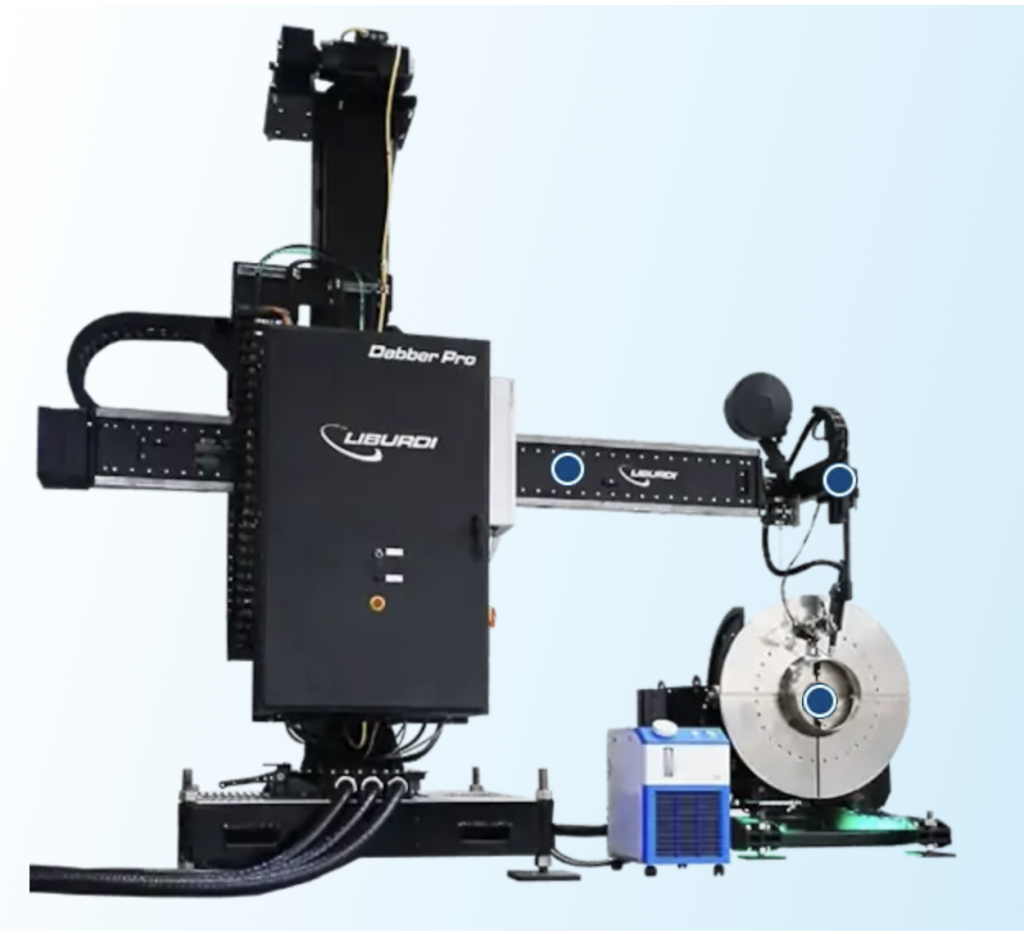What is Circumferential Welding System?
A Circumferential Welding System is a specialized welding setup designed to perform welding operations along the circumference of a cylindrical object, such as pipes, tubes, or other round components. This system is commonly used in industries such as oil and gas, aerospace, automotive, and manufacturing where high-quality, consistent, and repeatable welds are required on circular parts.
Key Components and Operation:
- Rotational Mechanism:
- The circumferential welding system typically includes a mechanism to rotate the workpiece or the welding head around the cylindrical part. The rotation can be controlled precisely to ensure uniform welding speed, which is crucial for achieving consistent weld quality.
- Welding Head:
- The welding head can be equipped with various types of welding processes such as Gas Tungsten Arc Welding (GTAW/TIG), Gas Metal Arc Welding (GMAW/MIG), Plasma Arc Welding (PAW), or Laser Welding, depending on the specific application. The head may be stationary while the workpiece rotates, or it can move in tandem with the workpiece.
- Control System:
- Modern circumferential welding systems are often controlled by programmable logic controllers (PLCs) or CNC systems that allow for precise control over the welding parameters, including rotational speed, welding speed, arc length, current, voltage, and other essential variables. This automation ensures high repeatability and reduces human error.
- Fixture or Chuck:
- The workpiece is typically held in place by a fixture or chuck, which can rotate it accurately at the desired speed. The fixture must be designed to securely hold the part without distortion, as any misalignment can lead to defects in the weld.
- Shielding Gas Delivery:
- For processes like TIG or MIG welding, a shielding gas (such as argon or a mixture of gases) is delivered to the weld zone to protect the molten weld pool from atmospheric contamination. The gas delivery system is integrated into the welding head or positioned around the workpiece.
- Seam Tracking System:
- Advanced circumferential welding systems may include a seam tracking system, which uses sensors or cameras to detect the seam and adjust the welding path in real-time. This ensures the welding torch follows the exact path needed, even if there are minor deviations in the workpiece.
- Cooling System:
- Some circumferential welding systems incorporate a cooling mechanism to manage the heat generated during welding, especially in high-power applications. This cooling can be applied to the welding head, the workpiece, or both.
Applications:
- Pipeline Welding: Used extensively in the oil and gas industry for welding large-diameter pipes.
- Pressure Vessels: Manufacturing and repairing pressure vessels where the integrity of the circumferential weld is critical.
- Automotive and Aerospace Components: Used for welding critical components like exhaust systems, engine parts, or structural components.
- Tanks and Boilers: Welding of cylindrical tanks, boilers, and similar large structures.
Advantages:
- Consistency and Quality: The automation and precision of circumferential welding systems result in high-quality welds with minimal defects.
- Efficiency: Faster welding processes with reduced labor costs and time compared to manual welding.
- Versatility: Can be adapted to various welding processes and materials, making it suitable for a wide range of applications.
In summary, a circumferential welding system is a highly specialized tool designed to automate and optimize the welding process for cylindrical components, ensuring high precision and repeatability in industries where weld quality is critical.


